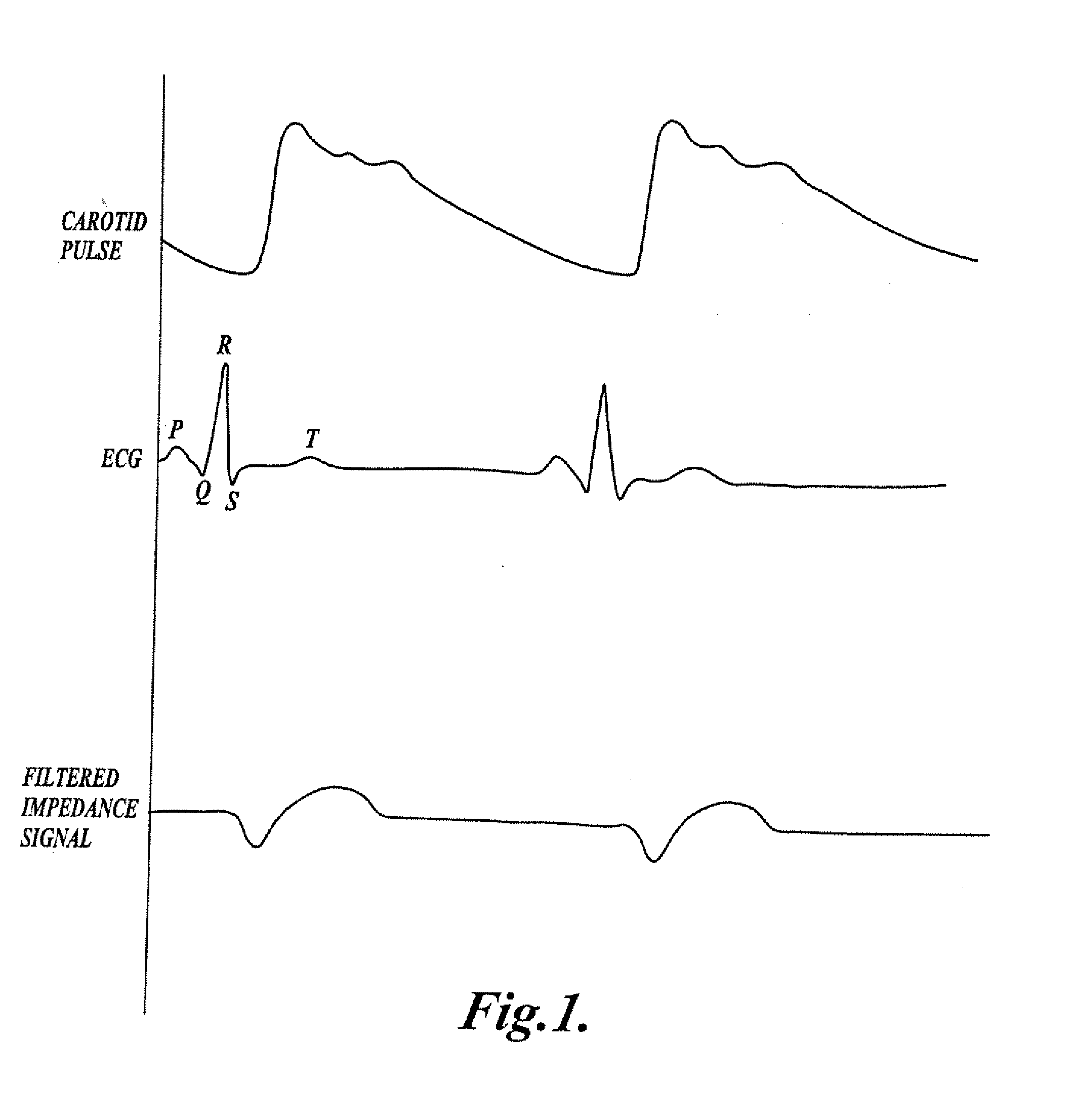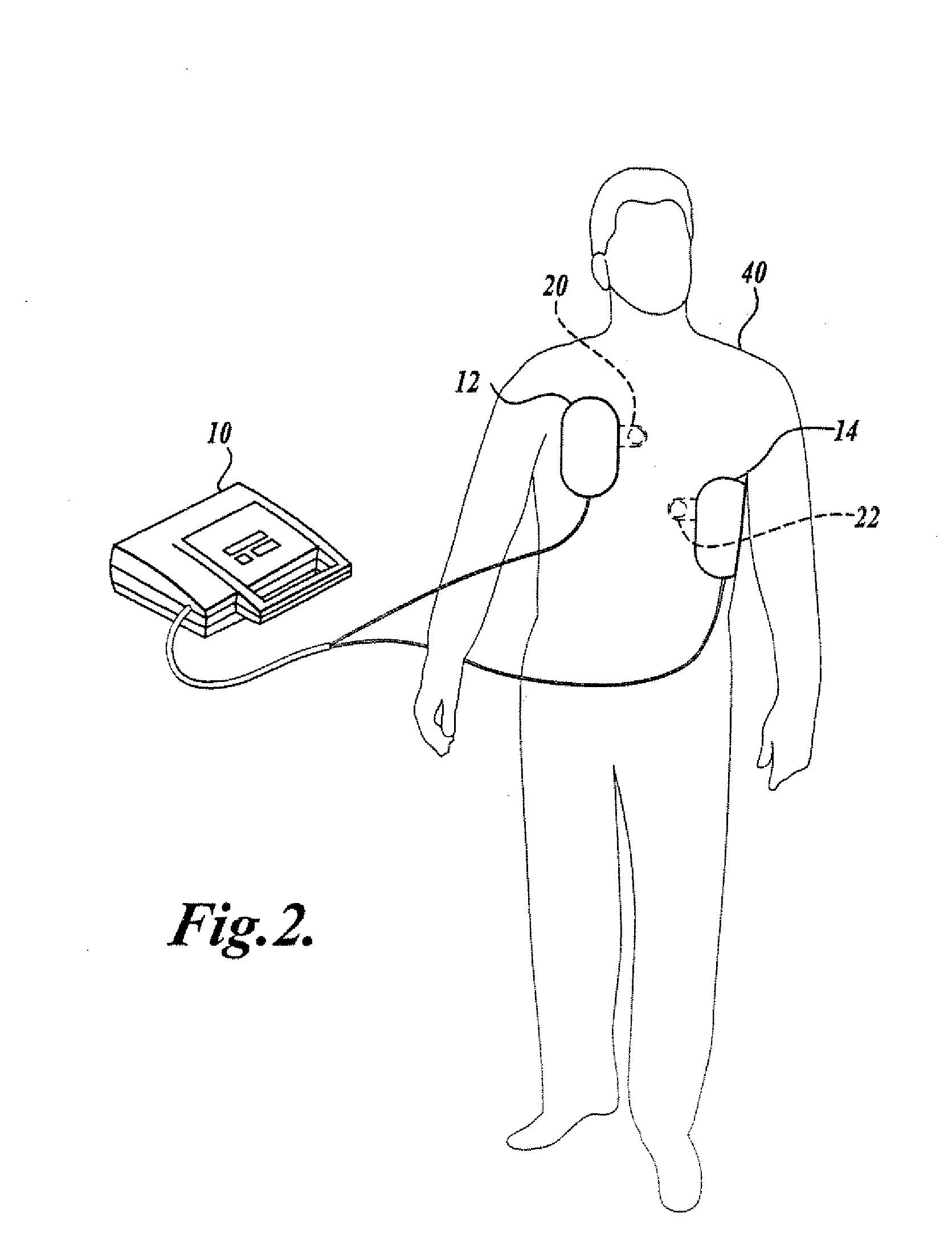Pulse Detection Method and Apparatus Using Patient Impedance
- Summary
- Abstract
- Description
- Claims
- Application Information
AI Technical Summary
Benefits of technology
Problems solved by technology
Method used
Image
Examples
Embodiment Construction
[0033] A device constructed in accordance with the present invention uses measurements of a patient's transthoracic impedance to determine the presence of a cardiac pulse in the patient. As will be appreciated from the description herein, the device may be a stand alone unit or it may be incorporated into another monitoring or therapy-providing device. In one suitable application, the present invention is implemented in a defibrillator, such as the defibrillator 10 shown in FIG. 2. A patient 40 is connected to the defibrillator 10 via electrodes 12, 14 placed on the skin of the patient. The defibrillator 10 uses the electrodes 12, 14 to deliver defibrillation pulses to the patient 40. The defibrillator 10 also uses the electrodes 12, 14 to obtain ECG signals from the patient 40.
[0034] The electrodes 12, 14 are further configured to communicate an impedance-sensing signal through the patient 40. The impedance-sensing signal is used by the defibrillator 10 to observe the patient's im...
PUM
 Login to View More
Login to View More Abstract
Description
Claims
Application Information
 Login to View More
Login to View More - R&D
- Intellectual Property
- Life Sciences
- Materials
- Tech Scout
- Unparalleled Data Quality
- Higher Quality Content
- 60% Fewer Hallucinations
Browse by: Latest US Patents, China's latest patents, Technical Efficacy Thesaurus, Application Domain, Technology Topic, Popular Technical Reports.
© 2025 PatSnap. All rights reserved.Legal|Privacy policy|Modern Slavery Act Transparency Statement|Sitemap|About US| Contact US: help@patsnap.com



